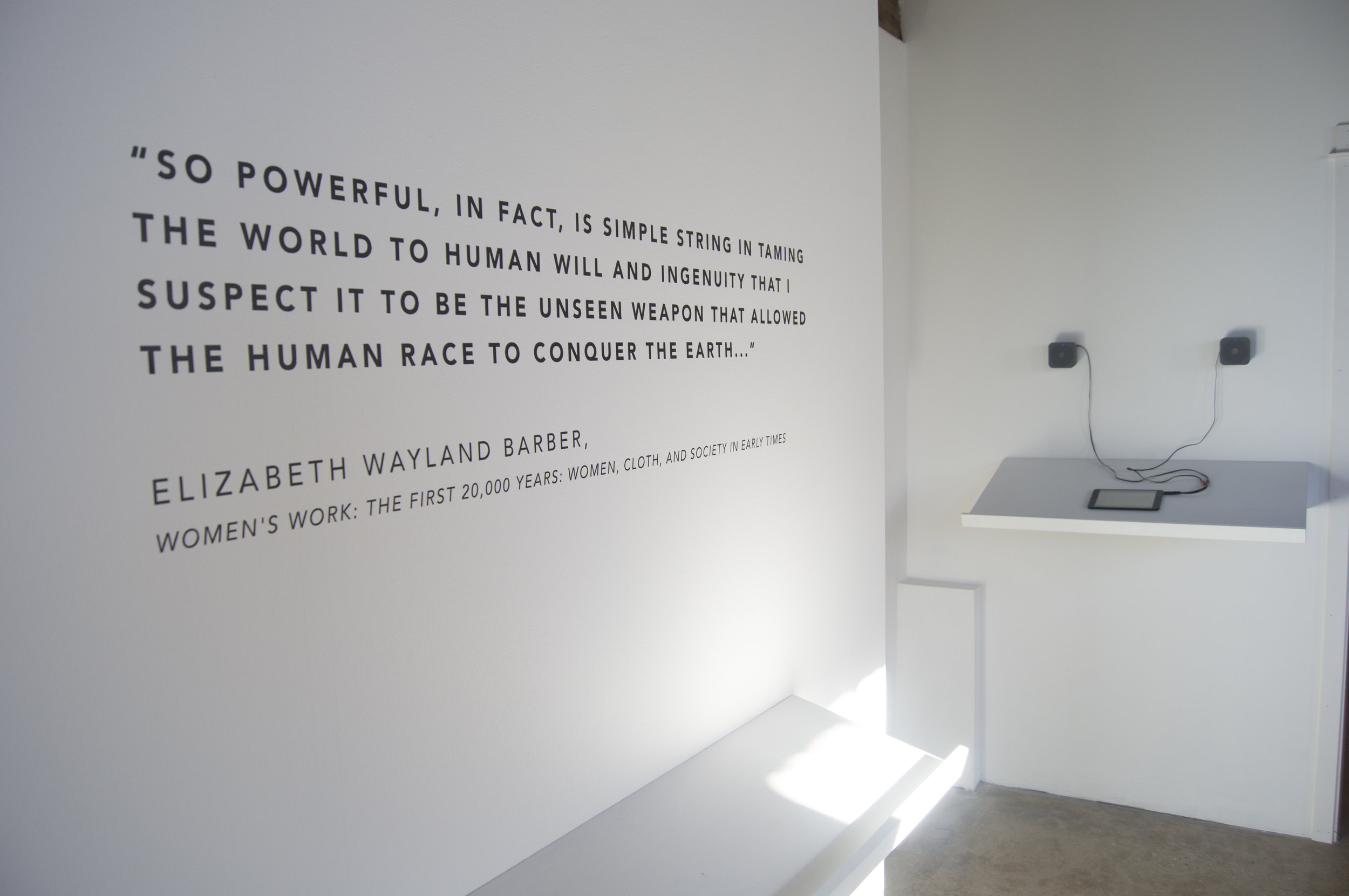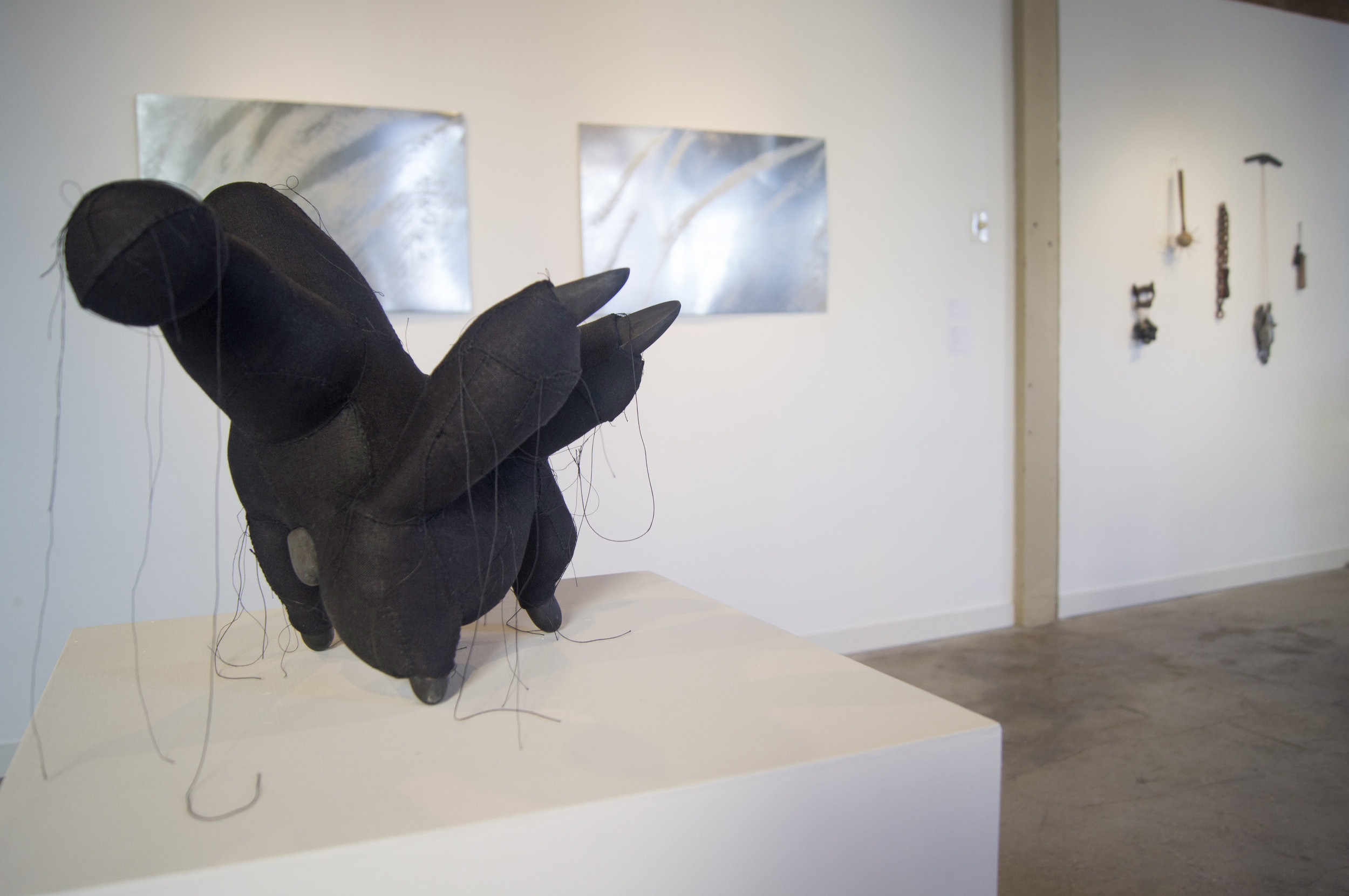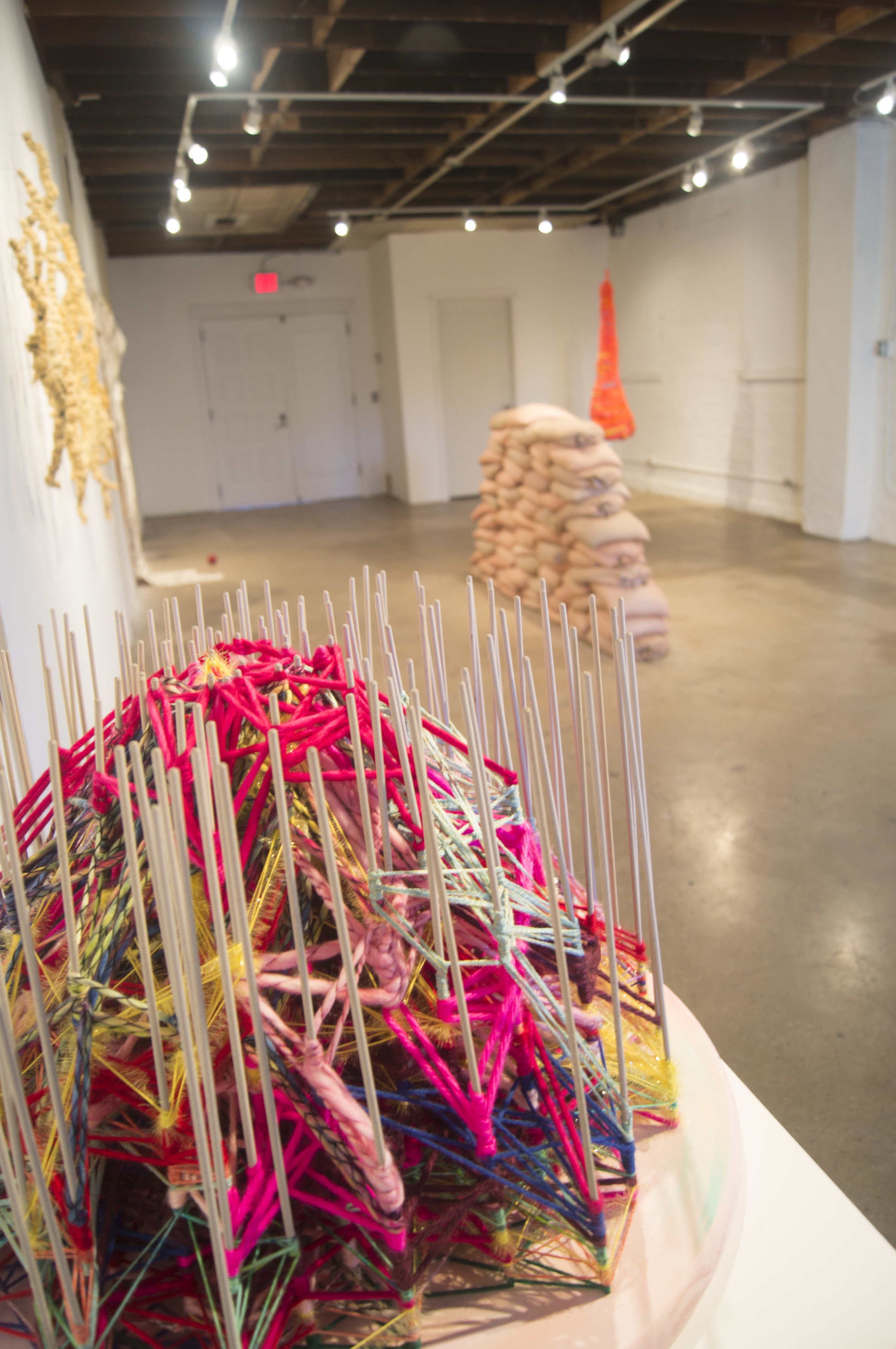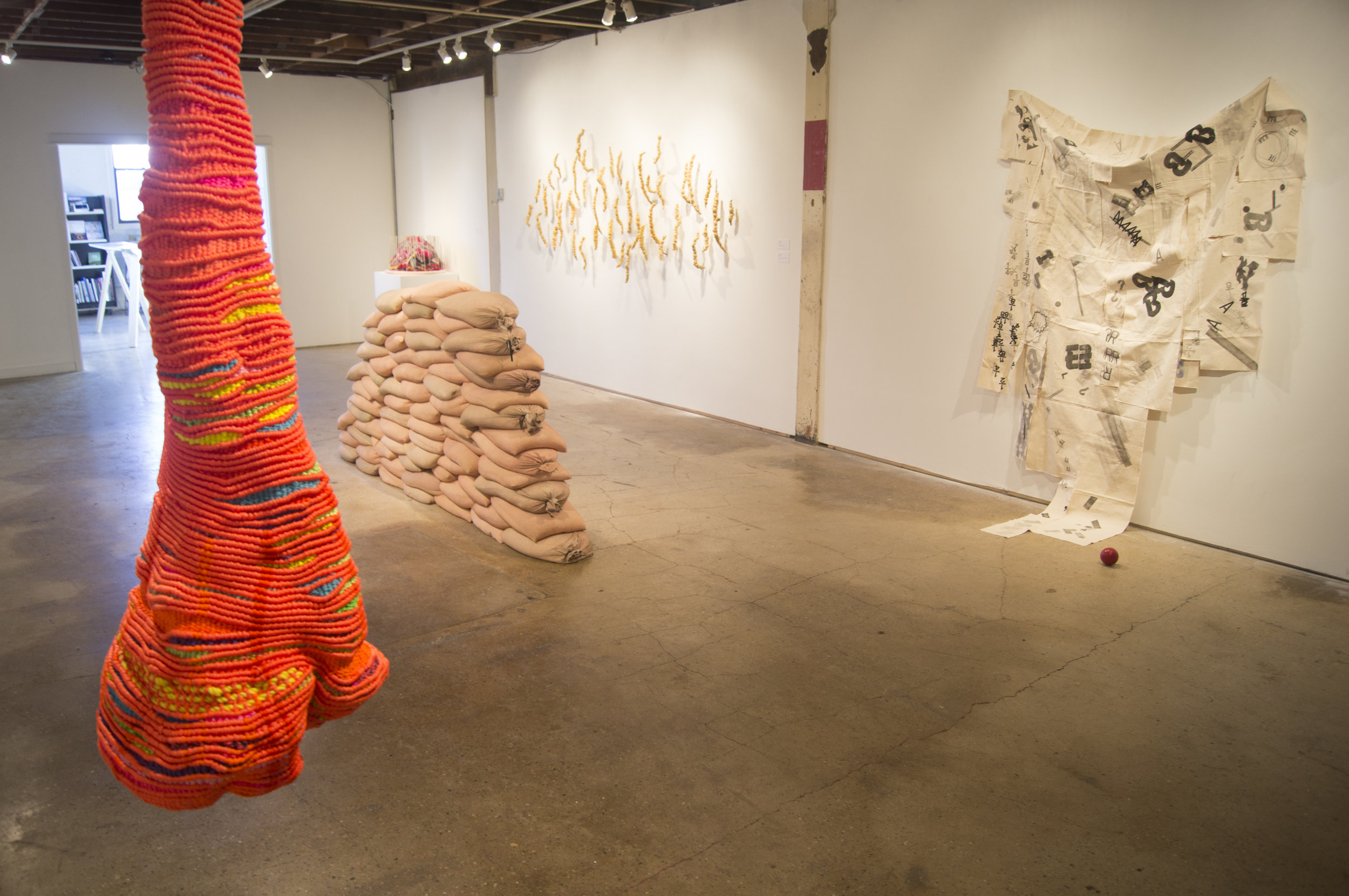







Fibers have been essential materials for weaponry. A bow cannot launch an arrow without its bowstring. Arrowheads were initially lashed to the arrow shaft with string. Arsenal examines the relationship between weapons and women, and the profound influence of fiber work on human culture. Textile historian, Elizabeth Barber, calls string the "unseen weapon that allowed the human race to conquer the earth." String enabled humans to catch, hold, carry, or bind things and create more complex objects. Fibers, and soft, impermanent materials, are often associated with the female, while harder materials like wood and metal are associated with the male. This transitory materiality of fibers is reflected in an incomplete, and often overlooked history that is akin to the relatively invisible history of the work women do around the world.
Works included in Arsenal affirm the qualities of fibers that we know, but often do not consider; strength, flexibility, tenacity. These qualities become a metaphor for survival in a largely patriarchal framework. The pieces in the exhibition create a compelling visual dialogue in a convergence of woven, netted, sewn, embroidered, flocked, and assembled artworks. Featuring work by eleven women, Yeonhee Cheong (Madison, WI), Lauren DiCioccio (San Francisco, CA), Angela Eastman (Detroit, MI), Kate Hampel (Chicago, IL), Jesse Harrod (Philadelphia, PA), Severija Inčirauskaitė-Kriaunevičienė (Vilnius, Lithuania), Sarah Kusa (Minneapolis, MN), J. Myszka Lewis (Madison, WI), Elysia Mann (Tallahassee, FL), Carrie Minikel (Oceanside, CA), and Vida Sačić (Chicago, IL) explore the materiality of fiber and the complex ways it can be used to combat issues of power, control, invisibility, and opportunity. The breadth of material properties provides artists a potent supply of poetic and metaphorical opportunities to examine self-defense, protection, gender, language, and labor. Language becomes tangible in several of the works (Mann, Sačić), while others (Hampel, Harrod) address the mutability of gender, the body, violence, and power. Several artists (Minikel, Kusa) create boundaries and objects of protection and self-defense. The ephemeral qualities of fibers are juxtaposed with materials commonly used for tools/weapons/survival (Lewis, Eastman). Fiber is exhibited in Arsenal as an ephemeral yet incredibly powerful weapon that can reframe our ideas about change and impermanence.
- Erica Hess, curator
Read an article about the exhibit by Holly Henschen in Madison's weekly publication, The Isthmus.